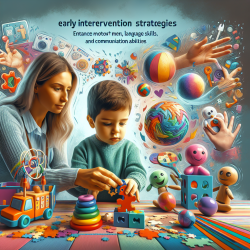As a therapist in an educational setting, I find immense joy in witnessing the progress of my students. Recently, I came across the findings from the Proceedings of the 19th annual conference of INEBRIA, which focused on evaluating digital interventions for alcohol and other drugs. This blog aims to help practitioners like you enhance your skills by implementing the outcomes of this research or encouraging you to delve deeper into further research.
Understanding Digital Interventions
Digital interventions have been shown to overcome barriers associated with face-to-face interventions. They are available 24/7 and can reach a broad audience. However, the field faces challenges due to the vast number of interventions available and inconsistencies in their design and evaluation.
Key Findings from INEBRIA's 19th Annual Conference
Several studies presented at the conference highlighted the effectiveness and acceptability of digital interventions:
- Dr. Melissa Oldham's study evaluated the Drink Less app, showing a significant reduction in alcohol consumption among higher-risk drinkers in the UK.
- Dr. Claire Garnett's process evaluation of the same trial revealed high engagement and acceptability of the Drink Less app among participants.
- Professor Lorien Abroms discussed using Electronic Health Records to identify at-risk individuals and signpost them to behavior change apps, showing promising results for smoking and drinking reduction.
- Professor Lillian Gelberg's study on digital Screening, Brief Intervention, and Referral to Treatment (SBIRT) for risky drug use among low-income primary care patients highlighted the challenges and potential of telehealth in expanding access to interventions.
Implementing Digital Interventions in Your Practice
Based on these findings, here are some practical steps to implement digital interventions in your educational setting:
- Start Small: Begin by recommending well-evaluated apps like Drink Less to students who may benefit from reducing their alcohol consumption.
- Monitor Engagement: Use apps that provide data on user engagement and acceptability. This will help you understand how students interact with the intervention and its effectiveness.
- Incorporate Feedback: Regularly gather feedback from students to improve the intervention process. This can be done through surveys or informal discussions.
- Stay Updated: Keep abreast of the latest research and developments in digital interventions. Attending conferences like INEBRIA can provide valuable insights and networking opportunities.
Encouraging Further Research
If you're passionate about this field, consider conducting your own research or collaborating with academic institutions. There is a need for more evidence-based interventions tailored to specific populations, such as students in educational settings.
To read the original research paper, please follow this link: Proceedings of the 19th annual conference of INEBRIA.










